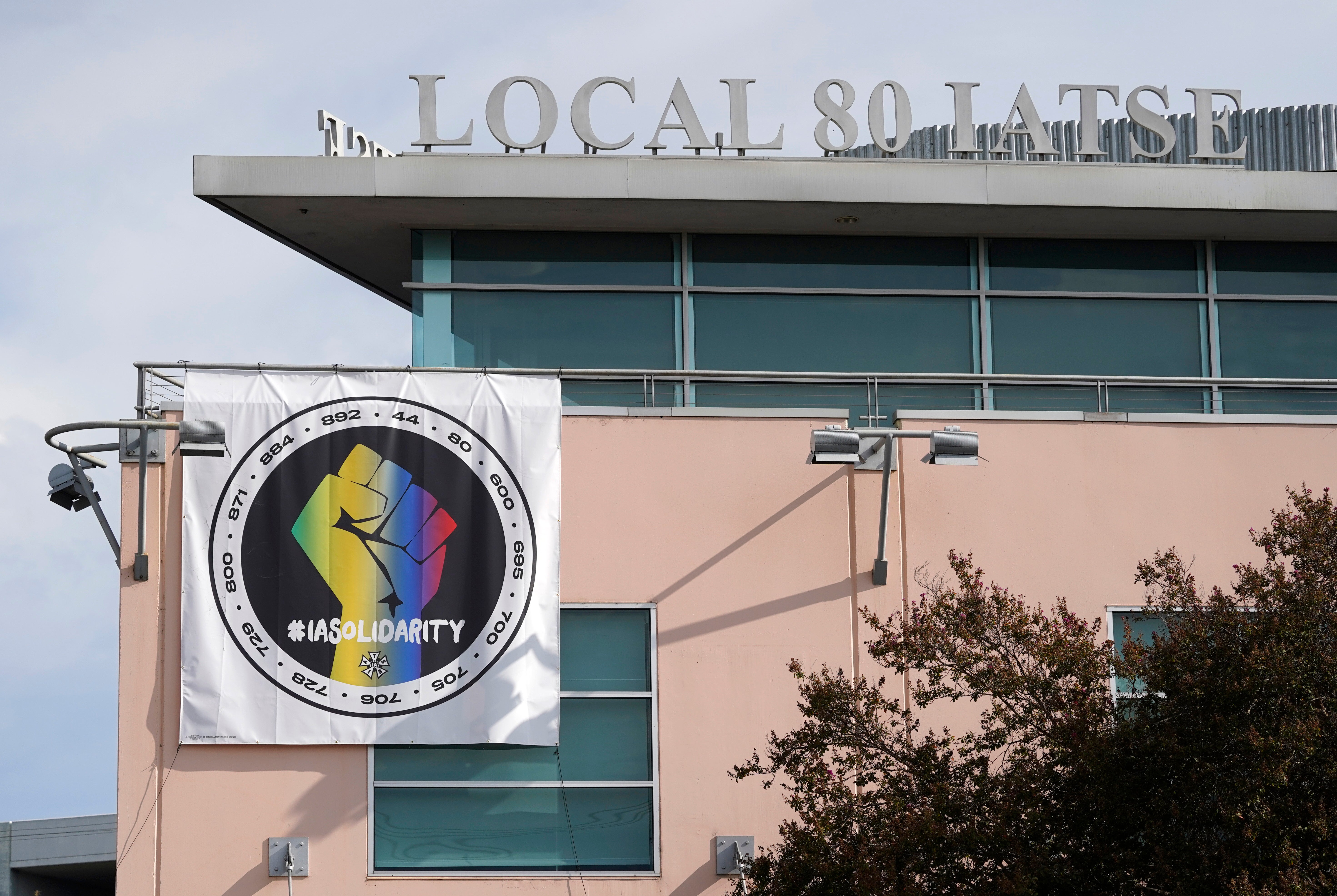EXPLAINER: What's behind the looming Hollywood strike?
A major Hollywood strike could be on the horizon for some 60,000 behind-the-scenes workers in the entertainment industry

Your support helps us to tell the story
From reproductive rights to climate change to Big Tech, The Independent is on the ground when the story is developing. Whether it's investigating the financials of Elon Musk's pro-Trump PAC or producing our latest documentary, 'The A Word', which shines a light on the American women fighting for reproductive rights, we know how important it is to parse out the facts from the messaging.
At such a critical moment in US history, we need reporters on the ground. Your donation allows us to keep sending journalists to speak to both sides of the story.
The Independent is trusted by Americans across the entire political spectrum. And unlike many other quality news outlets, we choose not to lock Americans out of our reporting and analysis with paywalls. We believe quality journalism should be available to everyone, paid for by those who can afford it.
Your support makes all the difference.A major Hollywood strike could be on the horizon for some 60,000 behind-the-scenes workers in the entertainment industry. Over the weekend, members of the International Alliance of Theatrical Stage Employees (IASTE) overwhelmingly voted in favor of authorizing a nationwide strike for the first time in its history.
Here we look at who is involved, what they're asking for and what's at stake.
WHAT IS THE IATSE?
The International Alliance of Theatrical Stage Employees (or IATSE for short, pronounced eye-AHT’-see) is a 128-year-old union representing over 150,000 artists, craftspeople and technicians in the entertainment industry in the United States and Canada Comprised of cinematographers, costumers, set designers, script supervisors, hair and makeup artists, animators, stagehands and many, many more, the IATSE represents essentially everyone who works in any form of entertainment (including movies, television, theater, concerts, trade shows and broadcasting) who isn’t an actor, director, producer or screenwriter.
WHY ARE THEY IN THE NEWS?
The three-year contracts that cover about 60,000 of the union’s members — one that primarily covers film and TV production in Los Angeles and Hollywood and another that covers other production hubs including New Mexico and Georgia — expired in July. For the past four months the union has been negotiating new terms with the Alliance of Motion Picture and Television Producers (AMPTP). Those discussions fell apart on Sept. 20. The IATSE says that the AMPTP have failed to address their biggest workplace problems, and membership voted overwhelmingly to give the organization’s president, Matthew D. Loeb, the ability to authorize a strike.
WHAT ARE THE WORKPLACE PROBLEMS?
The IATSE says its members are subjected to excessive working hours, unlivable wages for the lowest paid crafts and failure to provide reasonable rest, including meal breaks and time off between marathon working days and weekend work. Further, they say that workers on some “new media” streaming projects get paid even less. The Instagram account @ia_stories has been sharing anonymous accounts of some harrowing personal workplace stories and the effects of the excessively long hours on everything from personal safety to mental health.
WAIT, WHAT’S THE AMPTP?
The Alliance of Motion Picture and Television Producers is a group that represents hundreds of entertainment companies, including the major Hollywood studios, streaming services and production companies, and negotiates essentially all industry-wide guild and union contracts.
WHY ARE THE STREAMERS PAYING WORKERS LESS THAN TRADITIONAL STUDIOS?
In 2009, the IATSE and studios mutually agreed that new media productions required greater “flexibility” because the medium was not yet economically viable. That has changed in a big way, but the expectation of flexibility from crews has not. They feel they are being taken advantage of while streaming budgets and profits have reached blockbuster levels.
WHO ELSE SUPPORTS THE IATSE DEMANDS?
Social media support has been significant and many prominent people in the film industry have spoken out in support of the crews, like Octavia Spencer, Mindy Kaling, Jane Fonda and Katherine Heigl. On Monday, the Directors Guild of America issued a statement of solidarity too, signed by the likes of Steven Spielberg, Christopher Nolan, Barry Jenkins, Ron Howard, Ava DuVernay and Lesli Linka Glatter. Congressman Adam Schiff (D-Calif.), Senator Alex Padilla (D-Calif.), and 118 Senators and members of the House have also sent a letter to the AMPTP urging good faith negotiations.
IS A STRIKE INEVITABLE?
No, and leadership on both sides have said they would like to avoid it if possible. On Tuesday, the IATSE and the AMPTP resumed negotiations.
WHAT HAPPENS IF THEY DO STRIKE?
With 60,000 workers covered under the expired agreements, most productions would have to shut down in the U.S., including network shows and Netflix productions. But not all are affected: The IATSE contracts for “pay tv,” including HBO, Showtime, Starz, Cinemax and BET, don’t expire until Dec. 31, 2022 so those will keep going. Same goes for commercials and low budget productions, which also have different agreements.
As far as long-term consequences, it all depends on how long the strike goes on. The 100-day 2007-2008 Writers Guild of America strike, which also came about when contracts failed to address “new media” realities and loopholes, resulted in scuttled projects, shortened seasons of popular television shows and an influx of reality shows to fill the schedule gaps. Most networks and streamers have content reserves to fill the gaps for a bit.
WHAT NOW?
We wait.